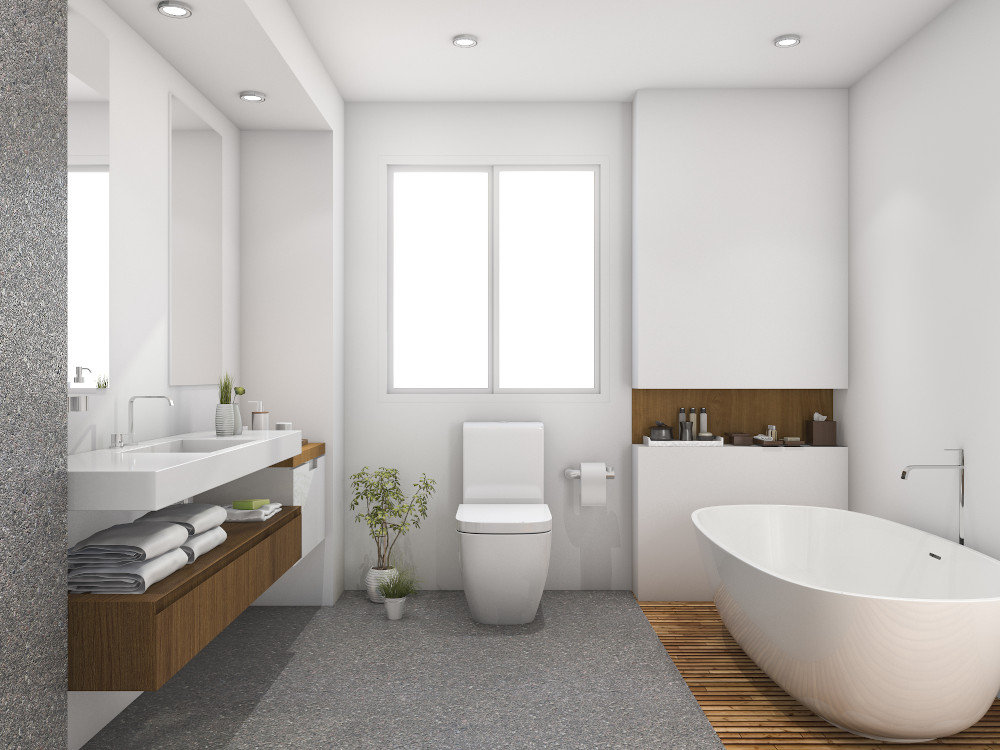
The Basics of Sink Plumbing in the Bathroom
Are you in the process of renovating your bathroom sink?
It’s not until you take it apart that you quickly begin to realise that there are a lot of different components. You might even end up feeling intimidated by all the parts. After all, you don’t want your bathroom sink to start leaking the moment you turn it on.
So what are all these parts that you’ve recently discovered? What happens if you accidentally find yourself with some remaining pieces after you’ve finished putting the bathroom sink back together? Before you turn the water main back on, make sure you’ve read through this guide, so you’re familiar with all of the parts that make up your bathroom sink, and they’re in the right place.
Shutoff Valves
Every plumbing fixture will get fitted with a shutoff valve to make it simple to turn off the water in a particular area while you’re performing remodelling or repairs. If you’re in the middle of renovating, it’s worth replacing these parts. Like most components, they age and will eventually need to get updated. So if you’re revamping your bathroom sink anyway, then you might as well look at getting a new shutoff valve.
Straight Shutoff Valve
These types of valves are ideal if the water is coming from underneath the cabinet or floor. It connects to the top of the fixture in the same spot as the water supply pipe while the handle sits in the middle of the body between the ports.
Angle Stop Valves
If your water line comes from the wall, then it’s likely you’ll have this type of shutoff valve. The handle is often parallel to the partition so that you’ve got easy access to it and won’t get your fingers jammed while you’re turning the knob.
Ball Valves
Your plumber has probably recommended ball valves to you. That’s because it’s one of the most popular types of shutoff valves. They’re easy to install, have low wear and tear, and are perfect for managing your water flow. Ball valves also come in many different types of materials and fit any kind of bathroom sink.
Pipes
During your bathroom sink renovation, you’re no doubt going to come across a pipe or two. Some will manage the water supply, while others will manage your drainage. You should know the difference between them so that you don’t end up flooding the bathroom.
P-Trap
A lot of the fixtures in your house will include a P-Trap. You’ll recognise it immediately as it resembles the letter of the alphabet. There’s always a little bit of water in it to help the drain open up. The P-Trap also helps keep the pipes from emitting any nasty smells throughout the house. The components break into two parts, so if one is damaged, then you can easily replace it rather than having to get a whole new P-Trap.
Sink Pop-Up
This component of the bathroom sink sits both above and below it. You should see a rod that runs horizontal and then a tailpiece as well. The rod allows the sink plug to pop up and down so you can fill the bathroom sink.
It’s a little complicated to replace though. You’ll need to start by removing the stopper before you can take it apart. While it’s in your hands, give it a bit of a clean as it often attracts a lot of soap scum and grime.
PVC
You should be familiar with this type of material as it’s perhaps the most popular item for plumbers and it’s useful for everything, including the bathroom sink. It even comes in multiple colours and thicknesses. They’re perfect as a drainage solution for your bathroom sink, but not so much for other parts of the house.
PVC works really well with cold water, but not so much when it’s warmed up. Hot water will weaken the material and can cause it to crack. So think about the temperature of the water you use the most when you’re considering PVC for your bathroom sink.
Copper
The copper pipes in your house are often used for the hot and cold water systems. Not only can they work above or below ground, but they can last up to 50 years, making them great value for money.
If you are running them underground, you might want to consider putting a protective sleeve on it to reduce the risk of corrosion. It’s also essential to perform regular maintenance checks on them to ensure they’re not thinning. When a copper pipe gets the smallest leak, it can be hard to track it down and very difficult to fix.
Galvanised Steel
Another option for your piping is galvanised steel. It features a zinc coat to prevent any erosion when water is flowing through it. A lot of older homes will often be fitted with galvanised steel pipes. However, the material is making a bit of a comeback.
The components have been upgraded for modern houses and can now last around 50 years. It can be even longer sometimes. However, you still need to get them checked regularly to ensure they’re working as they should.
Need a Hand With Your Bathroom Sink?
It doesn’t matter if you’re replacing or repairing your bathroom sink. It’s a big job. There are many vital components that make it up, and using the wrong ones can have severe consequences on your entire house.
If you’re renovating your bathroom or having trouble with your sink, don’t pull it all apart. Get in touch with All Day Plumbing instead. We’re experts in all of the above sink parts and even have other options that you might not have even considered. Book an appointment today, and we’ll make sure you get the bathroom sink of your dreams.